Zhiqiang Zhong
Automatic Annotation Augmentation Boosts Translation between Molecules and Natural Language
Feb 10, 2025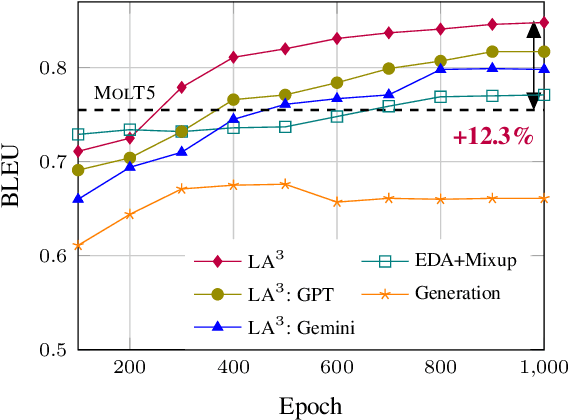
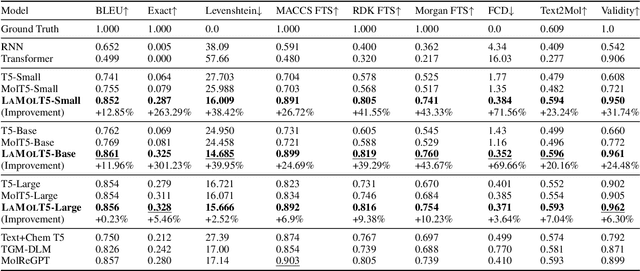
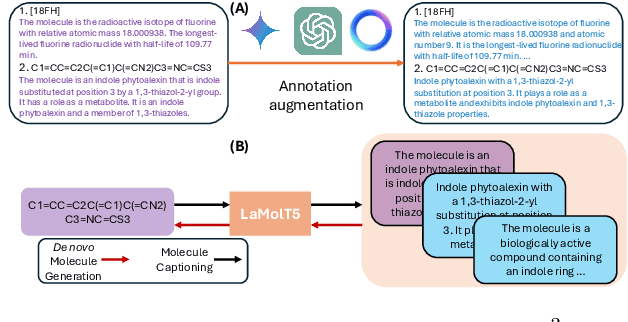
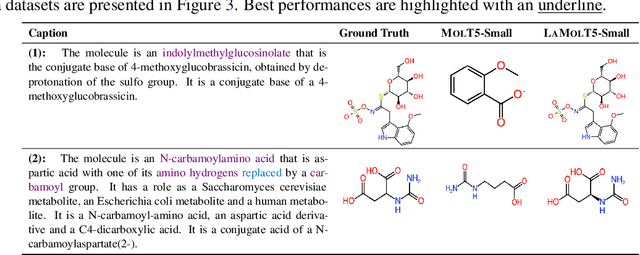
Abstract:Recent advancements in AI for biological research focus on integrating molecular data with natural language to accelerate drug discovery. However, the scarcity of high-quality annotations limits progress in this area. This paper introduces LA$^3$, a Language-based Automatic Annotation Augmentation framework that leverages large language models to augment existing datasets, thereby improving AI training. We demonstrate the effectiveness of LA$^3$ by creating an enhanced dataset, LaChEBI-20, where we systematically rewrite the annotations of molecules from an established dataset. These rewritten annotations preserve essential molecular information while providing more varied sentence structures and vocabulary. Using LaChEBI-20, we train LaMolT5 based on a benchmark architecture to learn the mapping between molecular representations and augmented annotations. Experimental results on text-based *de novo* molecule generation and molecule captioning demonstrate that LaMolT5 outperforms state-of-the-art models. Notably, incorporating LA$^3$ leads to improvements of up to 301% over the benchmark architecture. Furthermore, we validate the effectiveness of LA$^3$ notable applications in *image*, *text* and *graph* tasks, affirming its versatility and utility.
3rd Workshop on Maritime Computer Vision (MaCVi) 2025: Challenge Results
Jan 17, 2025Abstract:The 3rd Workshop on Maritime Computer Vision (MaCVi) 2025 addresses maritime computer vision for Unmanned Surface Vehicles (USV) and underwater. This report offers a comprehensive overview of the findings from the challenges. We provide both statistical and qualitative analyses, evaluating trends from over 700 submissions. All datasets, evaluation code, and the leaderboard are available to the public at https://macvi.org/workshop/macvi25.
The Solution for Single Object Tracking Task of Perception Test Challenge 2024
Oct 19, 2024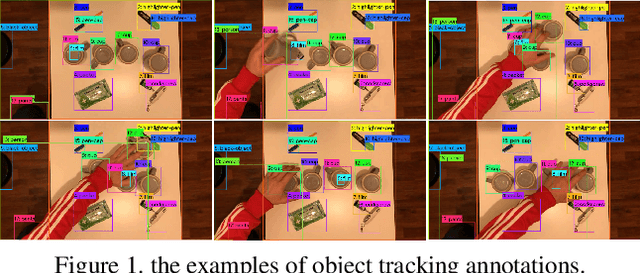
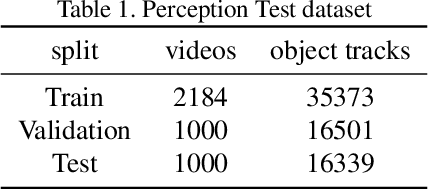
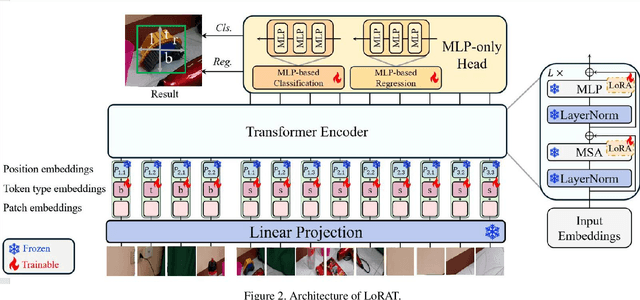
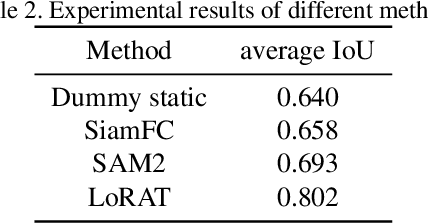
Abstract:This report presents our method for Single Object Tracking (SOT), which aims to track a specified object throughout a video sequence. We employ the LoRAT method. The essence of the work lies in adapting LoRA, a technique that fine-tunes a small subset of model parameters without adding inference latency, to the domain of visual tracking. We train our model using the extensive LaSOT and GOT-10k datasets, which provide a solid foundation for robust performance. Additionally, we implement the alpha-refine technique for post-processing the bounding box outputs. Although the alpha-refine method does not yield the anticipated results, our overall approach achieves a score of 0.813, securing first place in the competition.
Exploring Graph Structure Comprehension Ability of Multimodal Large Language Models: Case Studies
Sep 13, 2024Abstract:Large Language Models (LLMs) have shown remarkable capabilities in processing various data structures, including graphs. While previous research has focused on developing textual encoding methods for graph representation, the emergence of multimodal LLMs presents a new frontier for graph comprehension. These advanced models, capable of processing both text and images, offer potential improvements in graph understanding by incorporating visual representations alongside traditional textual data. This study investigates the impact of graph visualisations on LLM performance across a range of benchmark tasks at node, edge, and graph levels. Our experiments compare the effectiveness of multimodal approaches against purely textual graph representations. The results provide valuable insights into both the potential and limitations of leveraging visual graph modalities to enhance LLMs' graph structure comprehension abilities.
Benchmarking Large Language Models for Molecule Prediction Tasks
Mar 08, 2024



Abstract:Large Language Models (LLMs) stand at the forefront of a number of Natural Language Processing (NLP) tasks. Despite the widespread adoption of LLMs in NLP, much of their potential in broader fields remains largely unexplored, and significant limitations persist in their design and implementation. Notably, LLMs struggle with structured data, such as graphs, and often falter when tasked with answering domain-specific questions requiring deep expertise, such as those in biology and chemistry. In this paper, we explore a fundamental question: Can LLMs effectively handle molecule prediction tasks? Rather than pursuing top-tier performance, our goal is to assess how LLMs can contribute to diverse molecule tasks. We identify several classification and regression prediction tasks across six standard molecule datasets. Subsequently, we carefully design a set of prompts to query LLMs on these tasks and compare their performance with existing Machine Learning (ML) models, which include text-based models and those specifically designed for analysing the geometric structure of molecules. Our investigation reveals several key insights: Firstly, LLMs generally lag behind ML models in achieving competitive performance on molecule tasks, particularly when compared to models adept at capturing the geometric structure of molecules, highlighting the constrained ability of LLMs to comprehend graph data. Secondly, LLMs show promise in enhancing the performance of ML models when used collaboratively. Lastly, we engage in a discourse regarding the challenges and promising avenues to harness LLMs for molecule prediction tasks. The code and models are available at https://github.com/zhiqiangzhongddu/LLMaMol.
EvolMPNN: Predicting Mutational Effect on Homologous Proteins by Evolution Encoding
Feb 20, 2024
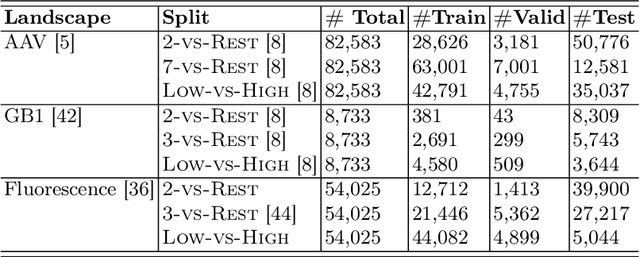
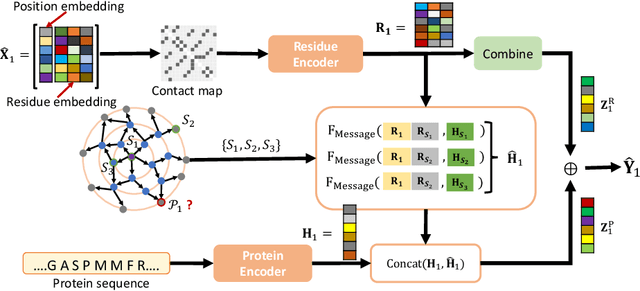
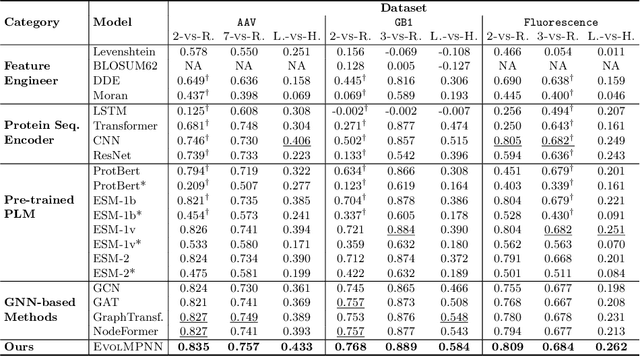
Abstract:Predicting protein properties is paramount for biological and medical advancements. Current protein engineering mutates on a typical protein, called the wild-type, to construct a family of homologous proteins and study their properties. Yet, existing methods easily neglect subtle mutations, failing to capture the effect on the protein properties. To this end, we propose EvolMPNN, Evolution-aware Message Passing Neural Network, to learn evolution-aware protein embeddings. EvolMPNN samples sets of anchor proteins, computes evolutionary information by means of residues and employs a differentiable evolution-aware aggregation scheme over these sampled anchors. This way EvolMPNNcan capture the mutation effect on proteins with respect to the anchor proteins. Afterwards, the aggregated evolution-aware embeddings are integrated with sequence embeddings to generate final comprehensive protein embeddings. Our model shows up to 6.4% better than state-of-the-art methods and attains 36x inference speedup in comparison with large pre-trained models.
Harnessing Large Language Models as Post-hoc Correctors
Feb 20, 2024Abstract:As Machine Learning (ML) models grow in size and demand higher-quality training data, the expenses associated with re-training and fine-tuning these models are escalating rapidly. Inspired by recent impressive achievements of Large Language Models (LLMs) in different fields, this paper delves into the question: can LLMs efficiently improve an ML's performance at a minimal cost? We show that, through our proposed training-free framework LlmCorr, an LLM can work as a post-hoc corrector to propose corrections for the predictions of an arbitrary ML model. In particular, we form a contextual knowledge database by incorporating the dataset's label information and the ML model's predictions on the validation dataset. Leveraging the in-context learning capability of LLMs, we ask the LLM to summarise the instances in which the ML model makes mistakes and the correlation between primary predictions and true labels. Following this, the LLM can transfer its acquired knowledge to suggest corrections for the ML model's predictions. Our experimental results on the challenging molecular predictions show that LlmCorr improves the performance of a number of models by up to 39%.
On the Robustness of Post-hoc GNN Explainers to Label Noise
Sep 08, 2023Abstract:Proposed as a solution to the inherent black-box limitations of graph neural networks (GNNs), post-hoc GNN explainers aim to provide precise and insightful explanations of the behaviours exhibited by trained GNNs. Despite their recent notable advancements in academic and industrial contexts, the robustness of post-hoc GNN explainers remains unexplored when confronted with label noise. To bridge this gap, we conduct a systematic empirical investigation to evaluate the efficacy of diverse post-hoc GNN explainers under varying degrees of label noise. Our results reveal several key insights: Firstly, post-hoc GNN explainers are susceptible to label perturbations. Secondly, even minor levels of label noise, inconsequential to GNN performance, harm the quality of generated explanations substantially. Lastly, we engage in a discourse regarding the progressive recovery of explanation effectiveness with escalating noise levels.
How Faithful are Self-Explainable GNNs?
Aug 29, 2023

Abstract:Self-explainable deep neural networks are a recent class of models that can output ante-hoc local explanations that are faithful to the model's reasoning, and as such represent a step forward toward filling the gap between expressiveness and interpretability. Self-explainable graph neural networks (GNNs) aim at achieving the same in the context of graph data. This begs the question: do these models fulfill their implicit guarantees in terms of faithfulness? In this extended abstract, we analyze the faithfulness of several self-explainable GNNs using different measures of faithfulness, identify several limitations -- both in the models themselves and in the evaluation metrics -- and outline possible ways forward.
Tiny-PPG: A Lightweight Deep Neural Network for Real-Time Detection of Motion Artifacts in Photoplethysmogram Signals on Edge Devices
May 05, 2023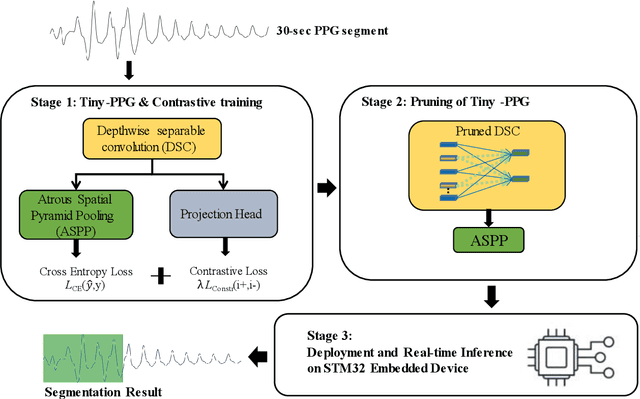
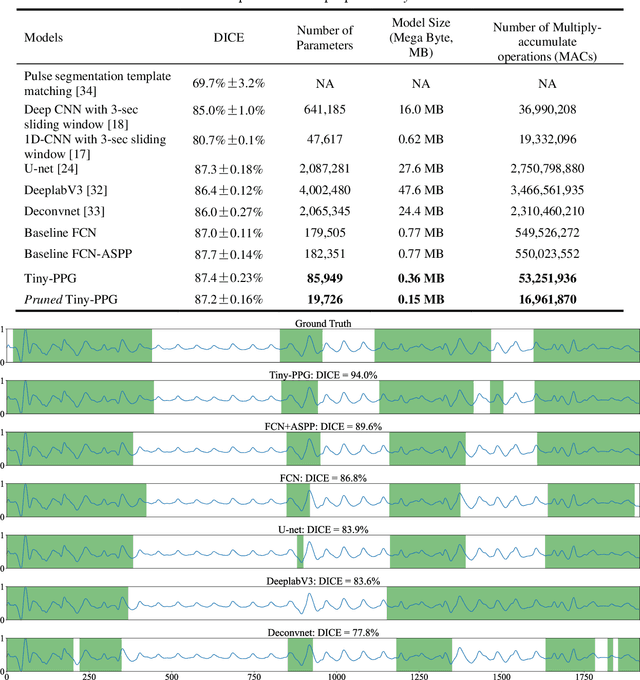
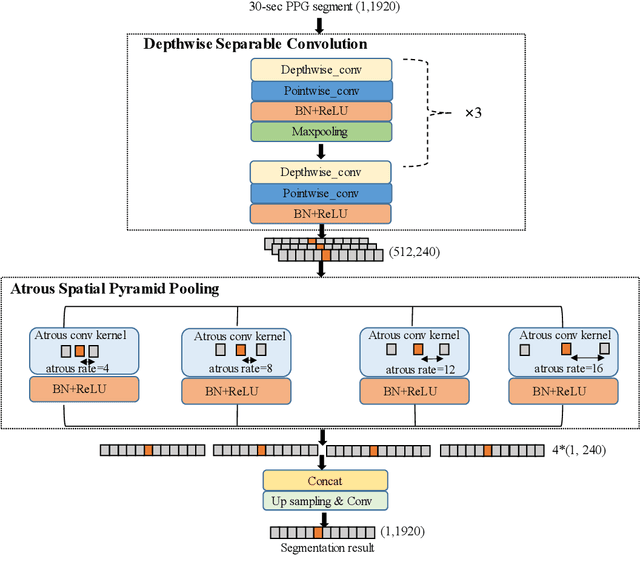
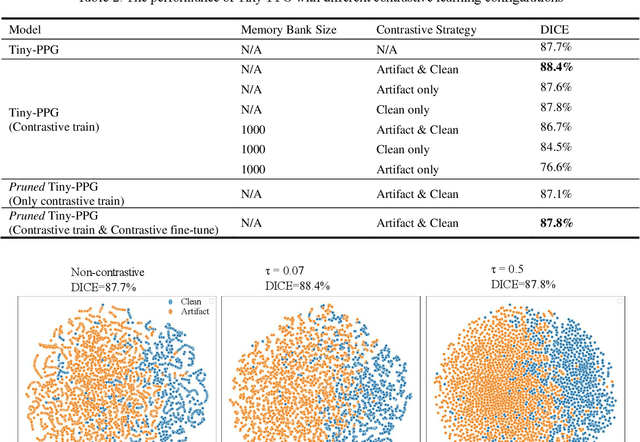
Abstract:Photoplethysmogram (PPG) signals are easily contaminated by motion artifacts in real-world settings, despite their widespread use in Internet-of-Things (IoT) based wearable and smart health devices for cardiovascular health monitoring. This study proposed a lightweight deep neural network, called Tiny-PPG, for accurate and real-time PPG artifact segmentation on IoT edge devices. The model was trained and tested on a public dataset, PPG DaLiA, which featured complex artifacts with diverse lengths and morphologies during various daily activities of 15 subjects using a watch-type device (Empatica E4). The model structure, training method and loss function were specifically designed to balance detection accuracy and speed for real-time PPG artifact detection in resource-constrained embedded devices. To optimize the model size and capability in multi-scale feature representation, the model employed deep separable convolution and atrous spatial pyramid pooling modules, respectively. Additionally, the contrastive loss was also utilized to further optimize the feature embeddings. With additional model pruning, Tiny-PPG achieved state-of-the-art detection accuracy of 87.8% while only having 19,726 model parameters (0.15 megabytes), and was successfully deployed on an STM32 embedded system for real-time PPG artifact detection. Therefore, this study provides an effective solution for resource-constraint IoT smart health devices in PPG artifact detection.
 Add to Chrome
Add to Chrome Add to Firefox
Add to Firefox Add to Edge
Add to Edge